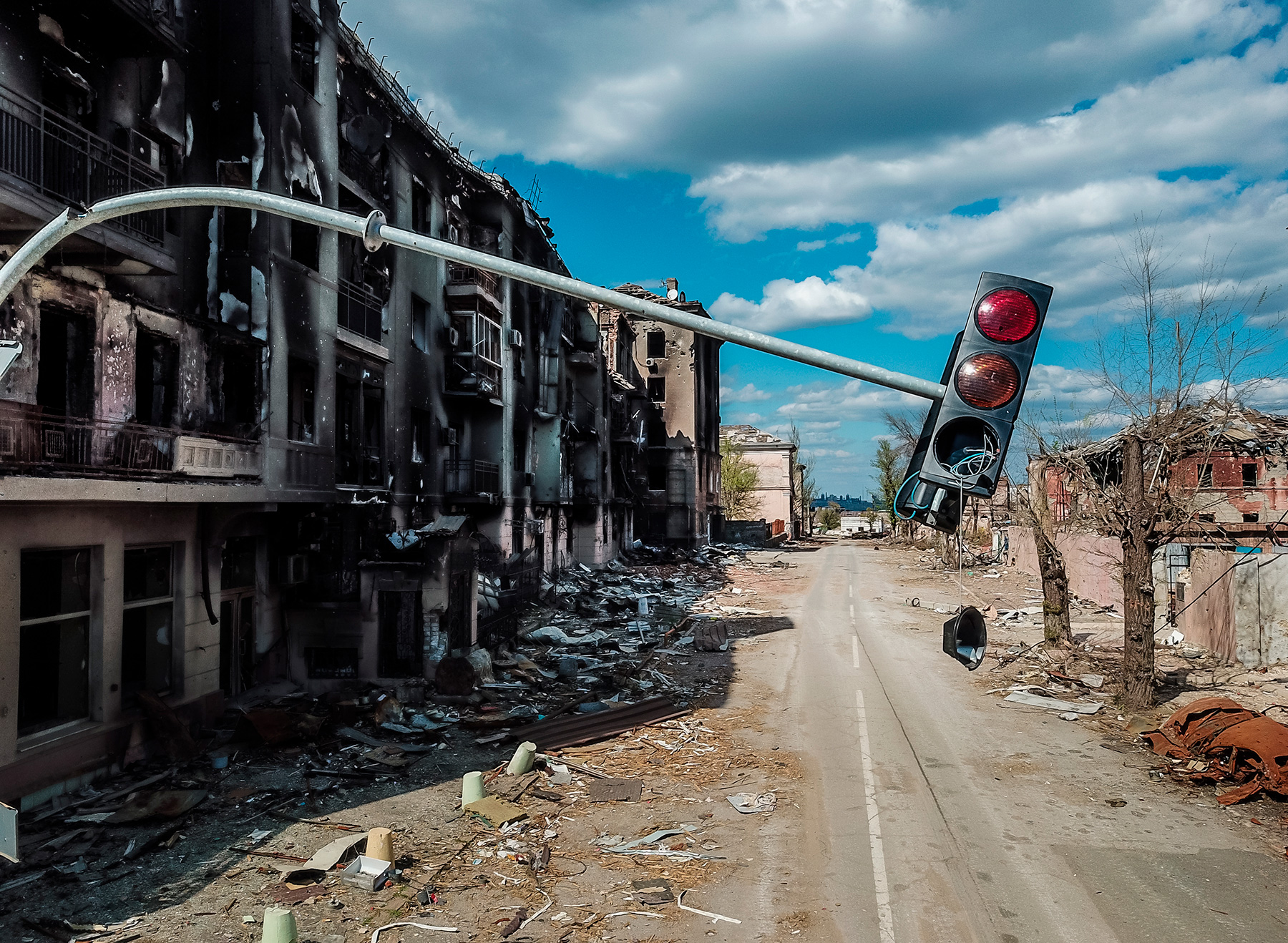Russia-Ukraine, India-Pakistan: Two Existential Conflicts in Eurasia
In
Login if you are already registered
(votes: 7, rating: 4.43) |
(7 votes) |
Ph.D. in History, Academic Director of the Russian International Affairs Council, RIAC Member
India and Russia are two great powers located in the South and the North of the vast Eurasian continent, and it is for a good reason that they both claim a proactive role in establishing an international order on the continent as well as globally. The two countries epitomise entire civilizations and each can rightly be proud of its amazing history, unique traditions and rich culture. At the same time, Russia and India face rather daunting challenges in effecting modernization, both socially and economically; the two nations still lag behind the most advanced economies of the world. Both Moscow and New Delhi attach great importance to national sovereignty and they are quite sensitive to what they regard as external attempts to interfere in their domestic affairs. Besides, both have to cope with powerful geopolitical competitors that outstrip them in many ways—India’s archrival is China, and Russia sees the United States and even the ‘collective West’ at large as Moscow’s global adversaries.
Moreover, Russia and India face fundamental problems in cultivating relations in their vast and diverse neighbourhoods, which further complicates the stances Moscow and New Delhi take on the international stage. This diverts attention and resources as well as prevents them from settling into the global community firm and steady. Both countries claim special roles in adjacent regions: India aspires to play such a role in South and Southeast Asia, while Russia tries to exercise strategic leadership in Central Asia and in some other parts of the former Soviet Union.
Both powers confront extremely sensitive and arguably existential challenges from their smaller and yet quite important neighbours. Pakistan has been a thorn in India’s side for a long time, while Ukraine has recently played a similar role for Russia. Of course, New Delhi and Moscow reacted to these challenges differently: India never launched anything comparable to the special operation that Russia is conducting in Ukraine since February 24, 2022. Still, an attempt at comparative analysis seems to be appropriate here. How far can we draw parallels between the India–Pakistan and Russia–Ukraine stand-offs? Are there any reasonable grounds to discuss any typological similarities between the two extremely difficult situations in two regions that differ so much from each other? Is it appropriate or even possible to explore common or parallel options for resolving the two issues? Can Moscow and New Delhi learn from each other in managing protracted conflicts with their neighbours?
It seems that the only way the relations between New Delhi and Islamabad could return to normal is within a broader international context. The same is true of Moscow–Kyiv relations. Put it differently, for this to happen, new multilateral security systems in Eurasia and Europe respectively need to be built. Even this precondition may not be enough, though. Both New Delhi and Moscow have to sort out problems with their archrivals in order to approach conflicts in their neighbourhoods with more confidence and to enhance the efficacy of multilateral security arrangements. For India, this means, above all, some kind of a stable and mutually acceptable agreement with China. For Russia, it entails significantly improved relations with the United States. This would breathe new life into multilateral structures in Europe and Eurasia, namely the Shanghai Cooperation Organization and the Organization for Security and Cooperation in Europe. Moving the India–Pakistan and Russia–Ukraine disputes to multilateral formats will help mitigate the existing asymmetries in the balance of power for each of the pairs or, at least, to make these asymmetries less noticeable. Provided that New Delhi and Moscow take the principle of multilateralism seriously enough, and not as an opportunity to impose their will on smaller and weaker partners.
Of course, in both cases, stabilisation requires the stronger side to respect the weaker side’s nationhood. India has to recognize that Pakistan is not a blind tool of Beijing, while Russia must acknowledge that Ukraine, for all its weakness and dependence on external actors, is not an obedient puppet of the United States or Europe. For their part, Pakistan and Ukraine need to find some other—positive—foundations for their identity and stop pitting themselves against their stronger neighbours. Building one’s identity on the basis of negation is always detrimental and counterproductive in the long run. Incidentally, this would also be true of Russia’s attempts to build its identity on the basis that it is not a part of Europe.
Everything mentioned above suggests that the immediate goal in both conflict- equations is not to find an ideal “solution” to the problems between India and Pakistan as well as Russia and Ukraine or prevent further confrontation once and for all—this would simply be impossible at the present juncture. Rather, the goal should be to reduce the risks and costs that come from such a drawn-out confrontation. This, of course, does not mean that, when the escalation cycle is over, the parties cannot start interacting in relatively non-toxic areas such as climate change, biodiversity conservation, migration management or cross-border humanitarian contacts. Tangible headway on these issues could facilitate discussions of matters that remain more sensitive and divisive.
India and Russia are two great powers located in the South and the North of the vast Eurasian continent, and it is for a good reason that they both claim a proactive role in establishing an international order on the continent as well as globally. The two countries epitomise entire civilizations and each can rightly be proud of its amazing history, unique traditions and rich culture. At the same time, Russia and India face rather daunting challenges in effecting modernization, both socially and economically; the two nations still lag behind the most advanced economies of the world. Both Moscow and New Delhi attach great importance to national sovereignty and they are quite sensitive to what they regard as external attempts to interfere in their domestic affairs. Besides, both have to cope with powerful geopolitical competitors that outstrip them in many ways—India’s archrival is China, and Russia sees the United States and even the ‘collective West’ at large as Moscow’s global adversaries.
Moreover, Russia and India face fundamental problems in cultivating relations in their vast and diverse neighbourhoods, which further complicates the stances Moscow and New Delhi take on the international stage. This diverts attention and resources as well as prevents them from settling into the global community firm and steady. Both countries claim special roles in adjacent regions: India aspires to play such a role in South and Southeast Asia, while Russia tries to exercise strategic leadership in Central Asia and in some other parts of the former Soviet Union.
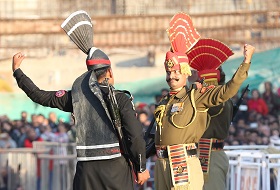
India — Pakistan and Russia — Ukraine: What if We Compare the Two?
Both powers confront extremely sensitive and arguably existential challenges from their smaller and yet quite important neighbours. Pakistan has been a thorn in India’s side for a long time, while Ukraine has recently played a similar role for Russia. Of course, New Delhi and Moscow reacted to these challenges differently: India never launched anything comparable to the special operation that Russia is conducting in Ukraine since February 24, 2022. Still, an attempt at comparative analysis seems to be appropriate here. How far can we draw parallels between the India–Pakistan and Russia–Ukraine stand-offs? Are there any reasonable grounds to discuss any typological similarities between the two extremely difficult situations in two regions that differ so much from each other? Is it appropriate or even possible to explore common or parallel options for resolving the two issues? Can Moscow and New Delhi learn from each other in managing protracted conflicts with their neighbours?
Historical Context
Let us start with the obvious. Each pair (India–Pakistan and Russia–Ukraine) is made up of societies that share several common characteristics. At some point, each pair belonged to a common economic, social, cultural and administrative space. The partition of the British Raj into the Dominion of India and the Dominion of Pakistan in August 1947 brought about fratricidal conflicts that claimed the lives of some million people, leading to the migration of millions, which affected all of South Asia on a larger scale and for a long time. For centuries, Russia and Ukraine formed the organic core of the Russian Empire, and later that of the Soviet Union. While the collapse of the Soviet Union did not result in an immediate direct military conflict between Moscow and Kyiv like it was in the case of the India-Pakistan War of 1947–1948, it was nevertheless extremely painful for Russia and Ukraine, also triggering significant migration flows that continue up to this day.
It is precisely the closeness of the “cultural and historical codes” of the two pairs of nations that gives rise to the desire among the emerging political elites in Pakistan and Ukraine to distance themselves from their larger neighbours as much as possible. The problem of these two newly born nations was that they did not have any significant history of independent modern statehood from which to draw, unlike some other parts of British ruled India and the Soviet Union. Not surprisingly, Pakistan’s identity was built on a consistent opposition to its Indian neighbour. Ukraine took a similar path already in its early years, which can be evidenced by the book published in 2003 by the country’s second president, Leonid Kuchma, under the title of Ukraine is Not Russia.
For Pakistan, the first marker of “otherness” was religion (Islam vs. Hinduism). Being a multiethnic and multicultural society, Pakistan could not build its national identity of ethnic nationalism. For Ukraine, it is the language that has gradually moved to the fore: a consistent, if not entirely successful, “Ukrainianization” was only much later complemented by claims to the autocephaly of the Orthodox Church of Ukraine following 25 years into the country’s independence. Ukraine is also a multiethnic society, but not as diverse as Pakistan: in the latter, Punjabis constitute less than 45 percent of the population, while in the former, in recent history, the share of ethnic Ukrainians has never been lower than 75 percent of the total. However, culturally Ukraine has been much more diverse than ethnically; Ukrainians living in the East have always been very different from those living in the West; Ukrainians from the countryside have had many distinctions from their countrymen living in large cities. This is why in Ukraine ethnic nationalism was not too popular until the current military clash with Russia; radical nationalists never received significant support in national or even regional elections.
Deceptive Fragility
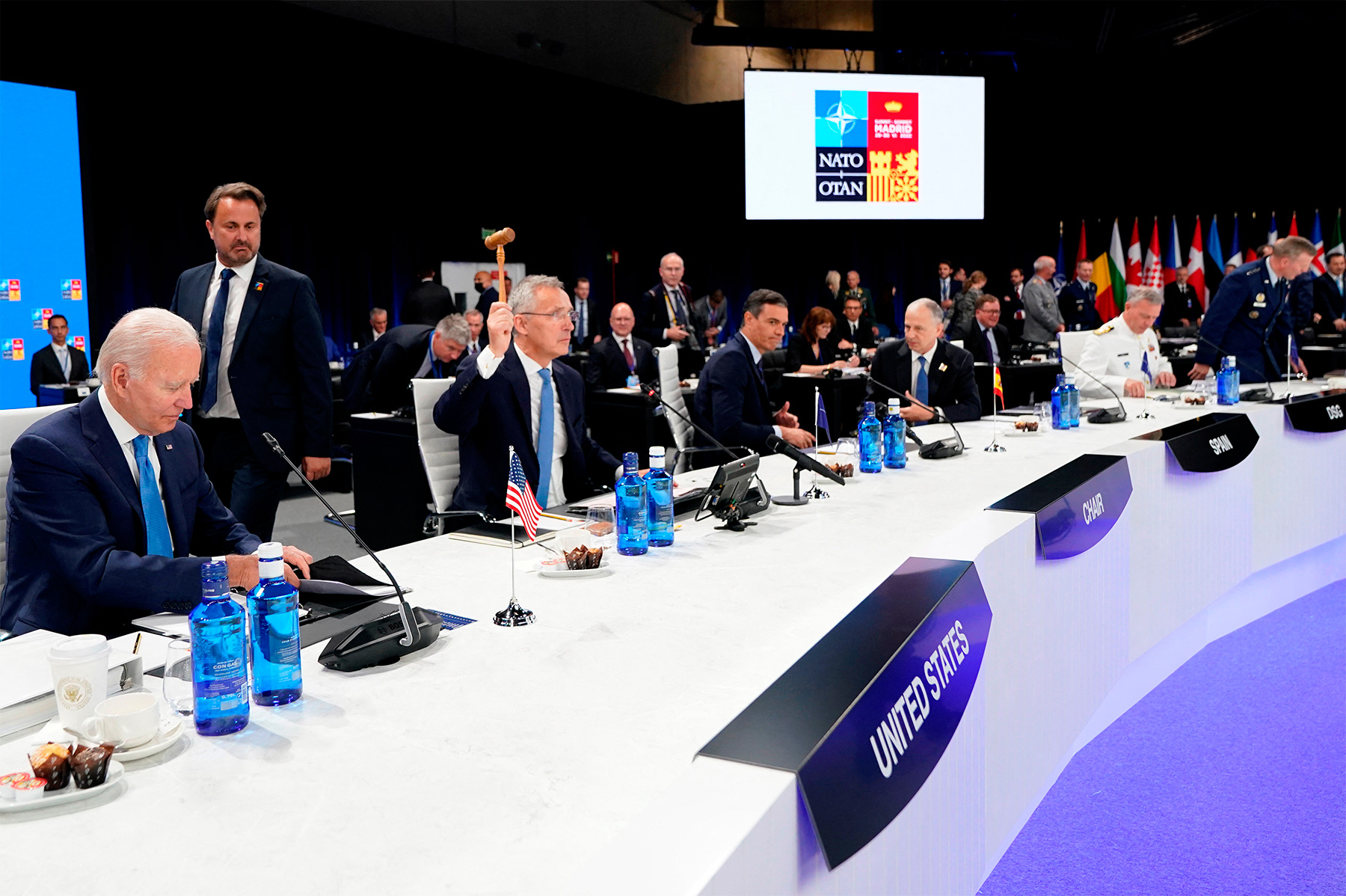
A New Western Cohesion and World Order
Notably, in India and in Russia many people often tend to treat Pakistan and Ukraine as somewhat artificial constructions that arose as an accidental coincidence of unfortunate political circumstances, with no obvious prospects in the long run. “Few” has never been the number of doom-laden forecasts presented in New Delhi and Moscow, assuming the inevitable disintegration of their neighbours into separate regions or their eventual transformation into “failed states”. One can argue that both Pakistan and Ukraine were on the verge of a state collapse at least a couple of times in their brief history; the state-building (and nation-building) process in the two shards of former imperial constructions has been very difficult and precarious.
However, despite the numerous domestic crises and external pressures, both Pakistan and Ukraine have demonstrated a high degree of resilience. For example, Pakistan, even with its fragility and a relatively inefficient public administration, has already existed longer than the Soviet Union. Pakistan survived four major military confrontations with India of 1947–1948, 1965, 1971 and 1999, although it did lose its eastern provinces, which would later become the independent state of Bangladesh. As for Ukraine, in the thirty years of its independence, the country experienced several sharp political and economic crises, a continuous decline in living standards, and major outflows of population, but nevertheless demonstrated a lot of social and political resilience. This resilience has been successfully tested during the ongoing Russian- Ukrainian military conflict that started in February of this year.
Besides, economic, demographic, territorial and other dimensions of national power of the legs in both pairs are obviously asymmetric. India is far larger, richer and stronger than Pakistan, while the same is true for Russia vis-a-vis Ukraine. That said, neither Pakistan nor Ukraine is so weak that India or Russia could ignore or manipulate their neighbour with impunity. For India, Pakistan is a much more important foreign policy problem than, say, the neighbouring Sri Lanka, where New Delhi also faces numerous challenges in sustaining its traditional influence. Similarly, Ukraine is far more important for Russia than all the three Baltic States combined, though the latter present a permanent headache for decision-makers in Moscow. While neither Pakistan nor Ukraine is currently able to act as an alternative agent of integration processes respectively in South Asia or across the post-Soviet space, they are more than capable of playing the spoiler or disruptor in any multilateral projects of integration that may emerge in the two regions.
Noteworthy Asymmetries
One should note, however, some significant differences between Pakistan and Ukraine. Within the India-Pakistan pair, India was always more advanced in building democratic political institutions, while Pakistan often tilted to authoritarianism and personalistic political regimes. That allowed Indian politicians to look at the neighbouring country with a degree of condescension and to claim that India was much more stable, better ruled and, moreover, more ‘modern’ than Pakistan. In India, people have been concerned about international terrorism coming from the territory of Pakistan, but they have never had to fear that the Pakistani political system would take roots in India. At the same time, democratic institutions and procedures set many significant limitations on India’s foreign policy and deprived Indian leaders of the degree of flexibility enjoyed by their Pakistani peers. Any Indian leader has to keep in mind the delicate balance of political power and the predominant public mood in the country.
It would be difficult to argue that Ukraine has emerged as a model of Western- style liberal democracy. But the country is persistently moving in this direction— gradually, inconsistently and with understandable setbacks and inevitable procrastination. Russia, in turn, is not a classical authoritarian state, but it has been drifting away from the liberal democratic model for at least the past twenty years. Ukrainian society is generally organized from the bottom up, like in India, while Russian society has a top-down process at its core, like in Pakistan. Since its independence in 1991, for example, Ukraine has had six presidents, and most of them have won power after highly contested (and sometimes very dramatic) elections. In the same period, Russia was ruled by only three heads of state, and each new leader was carefully selected, groomed and supported by his predecessor.
In terms of the general ongoing evolution of its political system, Ukraine might be getting closer to India, while Russia today is drifting closer to Pakistan. The leadership in Moscow is always concerned about the danger of the Russian society being influenced by ideas and political practices coming from Ukraine (so called “colored revolution”). This incompatibility of the two models of political organisation between India and Pakistan as well as between Russia and Ukraine not only makes reconciliation very hard to achieve but also creates problems in understanding each other. For instance, in Moscow, they always found it difficult to comprehend why in Kyiv they were so inconsistent and reluctant in implementing the Minsk Agreements; but the very nature of the Ukrainian political system makes it practically impossible for a president to impose such an unpopular arrangement on the national political establishment.
Models of Imperial Disintegration
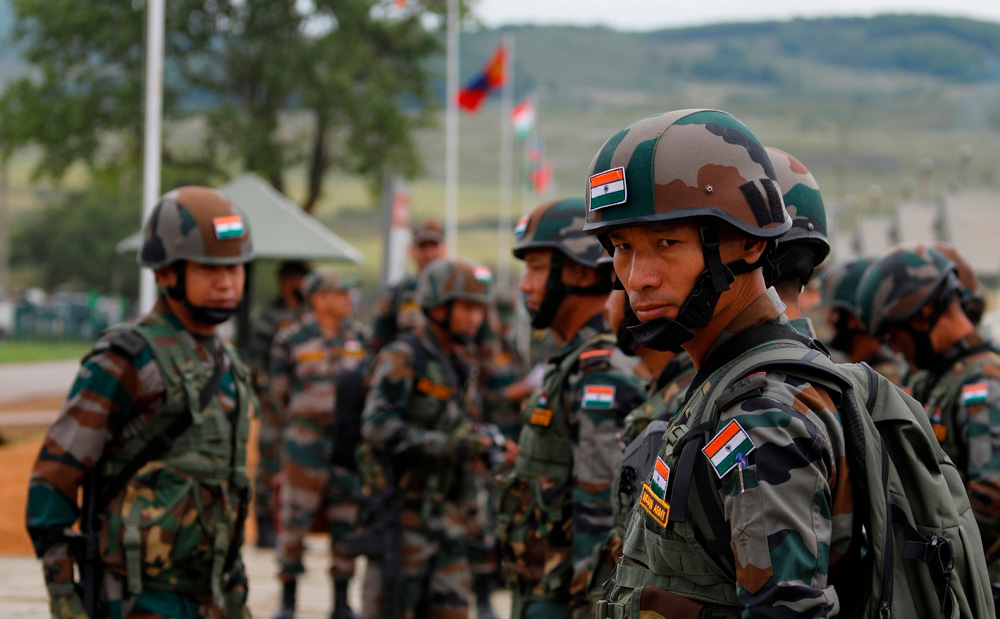
Vostok 2022: India’s Participation in Military Exercises
Opinion polls are invariable in their demonstration of persistent anti-Indian sentiments amid the public in Pakistan and anti-Russian attitudes in the minds of Ukrainians. However, the historical evolution of relations in the two pairs is somewhat different: hostilities between India and Pakistan arose immediately in the wake of the two countries gaining independence or even earlier, whereas the tensions between Russia and Ukraine manifested themselves only gradually. Unlike India and Pakistan, Russia and Ukraine have been able to avoid slipping into a large-scale military face-off till February of 2022, although Kyiv has considered Russia to be an “aggressor country” at least since 2014, when Moscow took control of the Crimean Peninsula away from Kyiv and supported two break-away regions in the east of the country (Donbas).
This difference can be, at least partially, explained by the specific patterns of the partition of India in 1947 and the Soviet disintegration in 1991. The partition of India was designed and managed from the outside by the British colonial administration; the separation between the two parts of pre-independence India was rapid, rigid and arguably irreversible. The Soviet Union, on the contrary, did not fully collapse at the end of 1991, but only entered a long, complex, and contradictory process of a gradual imperial disintegration. Not surprisingly, the overwhelming majority of the Soviet population turned out indifferent to the seemingly radical changes in their lives.
Thirty years ago, the leaders of the already former Soviet republics only proclaimed the goal of creating independent states on the site of the slowly imploding Soviet social, economic, and political institutions, but the process of building new statehoods lasted for several decades and continues even to this day. For a very long time, the main part of the post-Soviet space—with the possible exception of the three Baltic states—remained essentially a single entity in terms of economic ties, transportation and logistics infrastructure, standards of education, science, culture, and, most importantly, in terms of the mentality of the political and business elites in power. It took at least another generation for this entity to begin to fade into the past. Therefore, the real collapse of the USSR is only taking place today, literally in front of our eyes, and the states that have emerged in the post-Soviet space have yet to go through all the challenges, risks, and pains of imperial disintegration. This peculiar feature of the Soviet disintegration partially explains the ferocity of the ongoing Russian-Ukrainian conflict.
Military Equations
At the same time, though, both India and Pakistan are nuclear-weapon states, meaning neither country can be particularly interested in a direct large-scale military showdown with the risks of escalating to the nuclear level. The nuclear factor arguably remains a major deterrent preventing the two countries from starting a real war with each other. The nuclear India-Pakistani balance may well be one of the factors that prevented full-fledged wars between the two countries since the beginning of this century. Escalations of past years, including the one that took place in February of 2019, were quite limited in their scale. Ukraine abandoned Soviet nuclear weapons back in the 1990s, and the nuclear factor does not apply to Russia–Ukraine relations. Today, many in Kyiv believe that the abandonment of nuclear weapons by Ukraine was a strategic mistake, while in Moscow they refer to alleged Ukrainian plans to regain access to nuclear weapons as one of the justifications for the Russian special military operation launched on February 24, 2022.
In Kyiv, they often argue that the terms of the current military encounter are not fair to the Ukrainian side since Russia is much more advanced and powerful in the military sense than Ukraine is. The same complaints were made in Islamabad during military confrontations with India. Nevertheless, as the experience of several India- Pakistan clashes demonstrate, not everything depends on the balance of military powers on the ground or on the military hardware available to each of the sides. One should not forget that Ukraine enjoys international sympathy and almost unlimited defensive, economic, humanitarian and intelligence assistance from the West. Russia can rely only on itself and is exposed to the pressure of increasingly painful sanctions. Similarly, in the Indo-Pak context, for long periods Pakistan had strong alliance with the United States and then with China, while India has abjured alliances and has dealt with its security challenges on its own.
Many Russian experts are used to saying that the massive Western military and other support is the only reason why Ukraine has not yet crumbled or surrendered. The same argument was sometimes used by Indian experts regarding Pakistani resilience: Pakistan was perceived as existing on a life-support system provided by the United States or, more recently, by China. Nevertheless, this narrative does not explain the sources of Ukraine’s (or Pakistani) motivation and commitment. Consider Afghanistan, where all the long-term large-scale military support from America and its partners did not prevent the Taliban’s unstoppable offensive and the dismal fall of President Ashraf Ghani’s government in Kabul last year. Though there are many reasons why the two conflicts cannot be compared directly, the reality on the ground seems clear: whereas Afghans in 2021 were no longer motivated to fight to defend their country and their values, Ukrainians in 2022 clearly are.
Territorial Dimensions
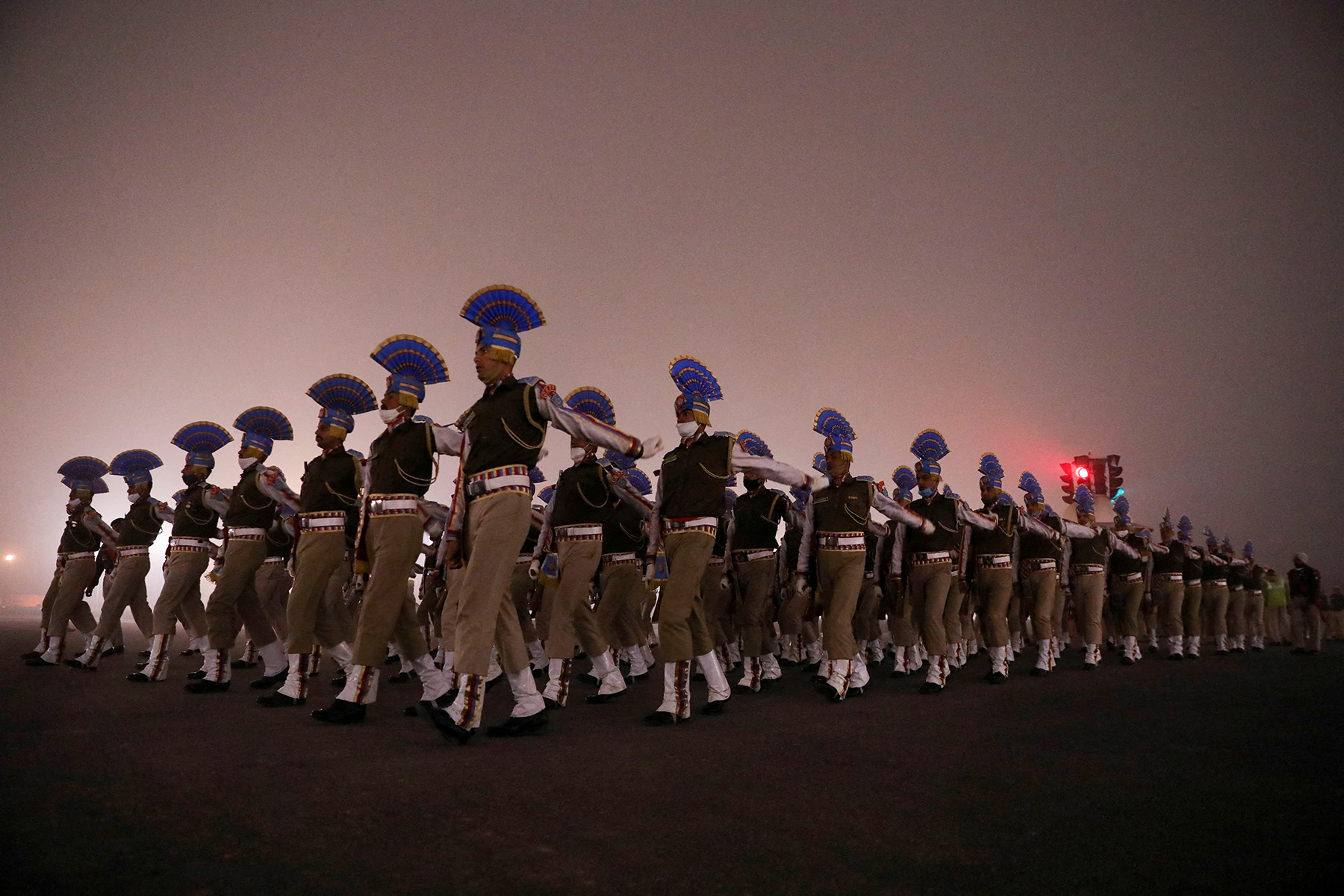
India Will Continue to Be Neutral
There is an important territorial element both to India–Pakistan and Russia–Ukraine relations, though existing problems within the two pairs of nations cannot be limited to disputes about territories and the wars within the pairs cannot be explained by territorial aspirations only. Certainly, to compare Kashmir and Crimea would look somewhat far- fetched, as the two regions have very different histories, the make-up and self- identification of their respective populations are in no way similar, and the features of their current international legal status do not at all coincide.
All that notwithstanding, there are some parallels to be found. New Delhi insists that the Kashmir conflict is no international matter and focuses on the “cross-border terrorism” emanating from Pakistan. Similarly, Moscow refuses to talk to Kyiv about Crimea, declaring the issue closed once and for all. However, neither Islamabad nor Kyiv is likely to drop their territorial claims any time soon, although rapprochement with India and Russia hinges on the progress in this area. The biggest difference between Pakistan and Ukraine is that Pakistan insists on a referendum in Kashmir (hoping that the Muslim population in the region will favor reunification with Pakistan), while Ukraine is reluctant to see a referendum in Crimea (citing the fact that the country’s constitution does not provide for this, but also because the officials in Kyiv may not like the outcome of such a referendum).
To compare Donbas and East Pakistan is even riskier. No politician or expert in Kyiv would like to draw direct parallels between Bangladesh and the break-away Donetsk and Lugansk Republics in the east of Ukraine. However, the way in which the leadership of Pakistan tried to reinstall its control over the eastern provinces of the country in 1971, was not that different from how the Ukrainian leadership attempted to suppress separatists in Donbas in 2014 and later. The scale of violence in East Ukraine in 2014 was in relative terms lower than the scale of violence in East Pakistan in 1971, and the size of the break-away territories and populations compared to the core metropolis was smaller. In both cases, the efforts to bring the rebellious parts of the country back under central control turned out to be unsuccessful. This, of course, does not necessarily mean that at some point Donetsk and Lugansk Republics would acquire the status of internationally recognized states, as Bangladesh is today.
International Environment
It is worth noting that the India–Pakistan and Russia–Ukraine bilateral balances are open rather than closed systems. The weaker members in these pairs are attempting to change the unfavorable correlation of forces by internationalizing the conflict to the extent possible, i.e., by bringing in external actors willing to play on the side of the weaker power. In its standoff with India, Pakistan has traditionally relied on the support of the United States and, more recently, that of China. Moreover, lately, Pakistan has invested a lot of political capital trying to reach out to Moscow and to convince Russia’s leadership to take a more “even-handed approach” towards the Indian-Pakistani disputes. The foreign support to Pakistan was so significant that some in New Delhi look at Islamabad as a policy tool in the hands of ambitious leaders in Beijing. Meanwhile, Kyiv, especially after the beginning of the Russian special military operation this year, has successfully managed to transform its conflict with Moscow into a conflict between Russia and the “collective west”, if not with the international community at large. Such a transformation has dramatically changed the correlation of forces-- both on the battlefield and at the diplomatic table. On the other hand, in Moscow it is often argued that Kyiv has a very limited autonomy from its “Western masters” and is in no position to negotiate any agreement without a preliminary consent from Western capitals, and therefore cannot be trusted in terms of implementing any future agreement. In sum, as both cases demonstrate, internationalisation drives up the costs of conflict for the stronger party, pushing hopes for a “final victory” into the distance. It works for the weaker party, securing the latter from a complete defeat and surrender. At the same time, a significant foreign engagement complicates the search for a settlement: foreign actors do not suffer in the conflict as much as the sides directly confronting each other. Therefore, foreign actors might be more willing to fight “till the last Pakistani” or “till the last Ukrainian” than Pakistani and Ukrainians themselves. This does not, however, exclude a possible constructive role of external actors in mediating or facilitating a peaceful settlement.
Plausible Solutions
What does this mean for the future of India–Pakistan and Russia–Ukraine relations? Today nobody can say with any confidence when and how the Russian military operation in Ukraine will end and what kind of a peace arrangement the two sides would agree to. In any case, the current military confrontation in the centre of Europe will not last forever, at some point it will be settled or, at least, frozen. Still, we need to acknowledge that political conflicts of this type tend to drag on for a very long time, surviving several generations. The confrontation between India and Pakistan has been going on for three quarters of a century now, with no signs that it will end in the foreseeable future. Even if the Kashmir issue is somehow resolved on terms acceptable to both sides, there are more than enough reasons for the two to remain at odds with one another. By the same token, it is difficult to imagine a situation where a reset in the Russia–Ukraine relations would be possible. Even a stable ceasefire and a political settlement of the Donbas problem (which do not look very likely at this point) would do little to change the overwhelmingly anti-Russian sentiments of the Ukrainian political class and the Ukrainian society. There is no trust between Moscow and Kyiv, and the spilled blood will not be forgotten or forgiven anytime soon. And, of course, negatively inclined external players might complicate any path to reconciliation even further.
It seems that the only way the relations between New Delhi and Islamabad could return to normal is within a broader international context. The same is true of Moscow–Kyiv relations. Put it differently, for this to happen, new multilateral security systems in Eurasia and Europe respectively need to be built. Even this precondition may not be enough, though. Both New Delhi and Moscow have to sort out problems with their archrivals in order to approach conflicts in their neighbourhoods with more confidence and to enhance the efficacy of multilateral security arrangements. For India, this means, above all, some kind of a stable and mutually acceptable agreement with China. For Russia, it entails significantly improved relations with the United States. This would breathe new life into multilateral structures in Europe and Eurasia, namely the Shanghai Cooperation Organization and the Organization for Security and Cooperation in Europe. Moving the India–Pakistan and Russia–Ukraine disputes to multilateral formats will help mitigate the existing asymmetries in the balance of power for each of the pairs or, at least, to make these asymmetries less noticeable. Provided that New Delhi and Moscow take the principle of multilateralism seriously enough, and not as an opportunity to impose their will on smaller and weaker partners.
Of course, in both cases, stabilisation requires the stronger side to respect the weaker side’s nationhood. India has to recognize that Pakistan is not a blind tool of Beijing, while Russia must acknowledge that Ukraine, for all its weakness and dependence on external actors, is not an obedient puppet of the United States or Europe. For their part, Pakistan and Ukraine need to find some other—positive—foundations for their identity and stop pitting themselves against their stronger neighbours. Building one’s identity on the basis of negation is always detrimental and counterproductive in the long run. Incidentally, this would also be true of Russia’s attempts to build its identity on the basis that it is not a part of Europe.
Everything mentioned above suggests that the immediate goal in both conflict- equations is not to find an ideal “solution” to the problems between India and Pakistan as well as Russia and Ukraine or prevent further confrontation once and for all—this would simply be impossible at the present juncture. Rather, the goal should be to reduce the risks and costs that come from such a drawn-out confrontation. This, of course, does not mean that, when the escalation cycle is over, the parties cannot start interacting in relatively non-toxic areas such as climate change, biodiversity conservation, migration management or cross-border humanitarian contacts. Tangible headway on these issues could facilitate discussions of matters that remain more sensitive and divisive.
First published in in VIF's Journal, National Security, Vol. 5 Issue 3 (July-September 2022).
This is a new and expanded version of the article. For an earlier version see, Kortunov, Andrey. “India-Pakistan and Russia-Ukraine: What If We Compare the Two?” Modern Diplomacy, October 30, 2021. https://moderndiplomacy.eu/2021/10/30/india-pakistan-and-russia-ukraine-what-if-we-compare-the-two/.
(votes: 7, rating: 4.43) |
(7 votes) |
The only way the relations between New Delhi and Islamabad can return to normal is within a broader international context. The same is true of Moscow — Kiev relations
Restoration, Reformation, Revolution? Blueprints for the World Order after the Russia-Ukraine conflictWorking Paper #66, 2022
India Will Continue to Be Neutral Vostok 2022: India’s Participation in Military ExercisesIndia’s participation in the Vostok 2022 exercises has injected fresh momentum into the relationship, and this is something that both countries need to build on
A New Western Cohesion and World OrderWorking paper № 69 / 2022


